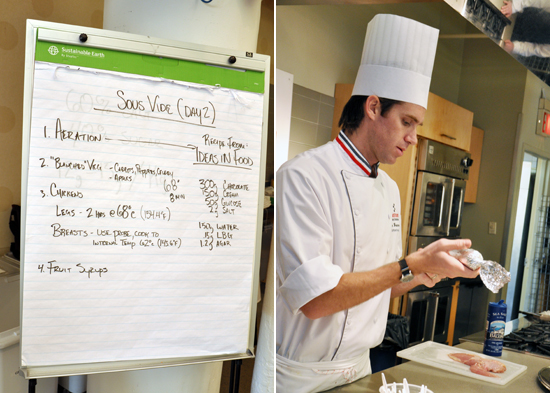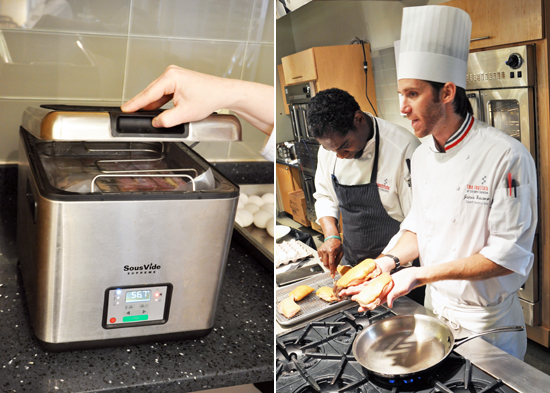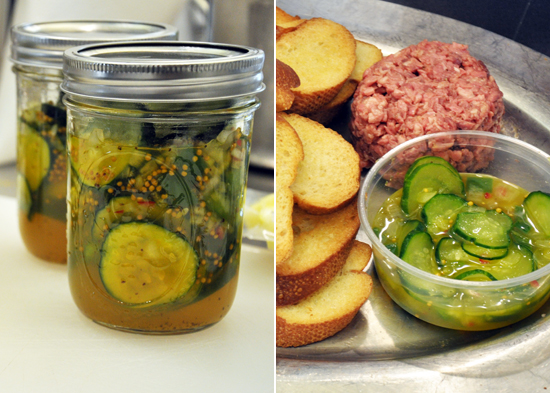Sous-Vide: The Basics with ICE Chef Instructor James Briscione
Earlier this week, ICE Chef Instructor James Briscione led a half demo, half hands-on class, to give ICE students a general introduction to the uses of sous-vide and low-temperature cooking applications.

It was the first of ICE’s dedicated modernistcooking classes teaching innovative techniques and how to use cutting-edge technology to our students. Chef James covered the theory and concepts behind sous-vide and low-temperature cooking, highlighting food safety and how to be sure the food was cooked safely using these new methods of cooking.
Readers of DICED will recognize many of the techniques he taught the students from the experiments he has shared with us here. The new class was a chance for ICE students and alumni to learn from his experience and knowledge and add it to their culinary arsenal.

Chef James prepared a variety of recipes all using the vacuum-sealer and immersion circulator to create inventive dishes and new taste experiences. He discussed how to use sous-vide for storage, compression, pickling and infusion, clarification, and aeration.
While many people think of sous-vide being used as a method to prepare meat, Chef James also used it to prepare a flavorful crème anglaise and poach pears. Using the vaccum sealer, he aerated chocolate and macerated citrus in its own juices. He taught the students how to prepare instant pickles using the vacuum sealer to brine the pickles, which he then served with a tender beef “tartare” that had actually been cooked for 12 hours, but looked raw because it was not exposed to air and no oxidation occurred when cooking. Other dishes included short ribs, chicken breasts and legs, pork ribs, duck breast and more.

In addition to a slew of different applications and techniques, it was a fascinating opportunity to learn the finer points of sous-vide. For example, a piece of meat cooked sous-vide will take on the shape it was cooked in, so that if you don’t lay the cuts of meat out flatly in the bag, they will become slightly amorphous and less pleasing to the eye. Chef James showed the students how to finish different cuts of meat by searing in a pan or under a broiler so that they looked like juicy, caramelized pieces of meat — with the incredible flavor and texture that comes with cooking sous-vide.


Add new comment